
Fun in the Sun: Water Activities and Games for You and Your Dog
This blog is your go-to guide for making the most out of the sunny weather while bonding with your furry friend. The warmth of the
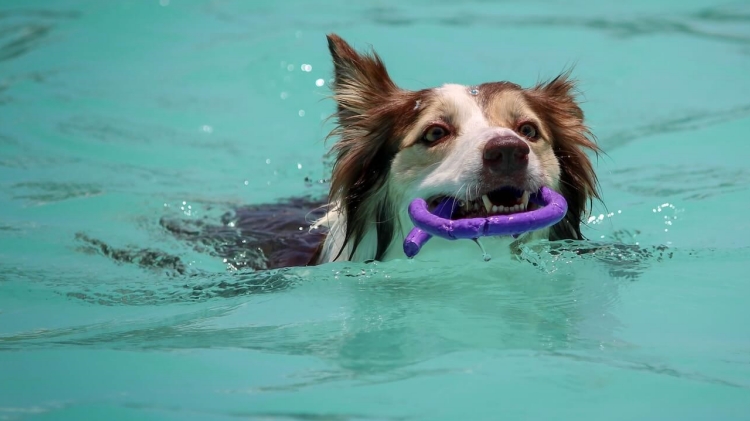
Installing a pool in your backyard for your furry friend to splash around in is an exciting project. But before you let your dog take the first swim, investing thought and preparation into proper pool set-up is a must.
Follow this guide covering location selection, safety measures, accessories, and more pointers for optimally constructing your doggie oasis.
Selecting the right spot to situate your dog’s pool sets the foundation for safety and enjoyment. Consider these factors:
Pools need at least 6 hours of direct sun daily for proper heating. But also leave room for shade structures so dogs can cool off. Strike balance between sunshine and shade coverage.
Choose an area you and your dog can easily access on a daily basis. Avoid tricky terrain that makes reaching the pool a challenge. Being able to frequently refresh and maintain water is key.
Prevent unsupervised access by situating the pool in a secure, fenced area. But be sure you can still view the entire pool to monitor your dog anytime they are using it.
Minimize distractions for shy dogs by locating the pool in a quiet, sheltered area of your property away from passersby and street views that could make your dog nervous.
Evaluate ground material. Softer surfaces like sand or grass may require digging deeper and adding supportive layers to prevent shifting or buckling of the pool structure.
Select a site with good drainage to prevent standing water puddles. Check ground is level using a leveling tool. Add fill material if needed to create a flat surface.
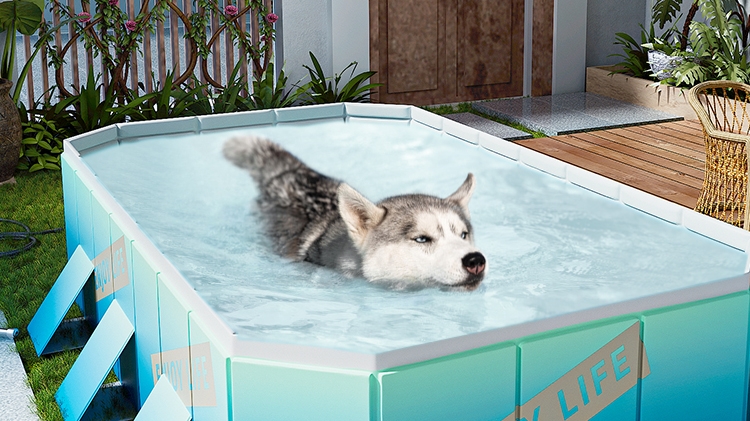
Never compromise on safety when constructing your dog’s pool. Build in these precautions:
Install fencing, gates, and pool covers to prevent unsupervised swimming. Dogs should only access the pool with owner supervision.
Choose rough plaster or add grip paints to finishes on stairs, benches, and pool flooring to create traction and prevent slips and falls.
Incorporate gradual depth increases, with the deepest end no more than 3 feet. This allows short dogs to still touch the bottom safely.
Consider installing a pool alarm that sounds if a dog falls undetected. Perimeter alarms alert you before they are in the water.
Avoid any steep drop-offs or sharp inclines that might encourage jumping in and risk injury. All entry points should be gradual.
Keep nets, ropes, hooks, and flotation devices poolside in case your dog gets into trouble and needs assistance rapidly exiting the water.
While safety comes first, don’t forget to incorporate features into your pool setup that will increase enjoyment for your dog!
Incorporate shallow sections, gradual slopes, underwater benches, and 5-6 ft deep ends to accommodate different swimming abilities and sizes.
Design multiple easy entry and exit points using gentle stairs, built-in benches, or corner ramps suited to your dog’s mobility needs.
Install fountains, waterfalls, squirting features, and submersible toys to add enrichment and encourage active play.
Add an outdoor shower, grooming table, shedding brush station, treat jars, and other amenities to create a doggie pool deck.
Provide shade via a retractable awning or pergola with climbing vines or mesh screens to allow cooling-off periods out of the sun.
Mix surfaces like river rocks, pebbles, poured concrete, or grip paint to create diverse textures underfoot your dog can explore.
Don’t overlook these necessary components in your pool construction plans:
Opt for reinforced concrete, fiberglass, or galvanized steel construction able to withstand daily dog use, digging, and clawing.
Choose exposed aggregate, stone coat, or cool deck coat finishes on the pool floor to provide traction and sturdy gripping for dogs.
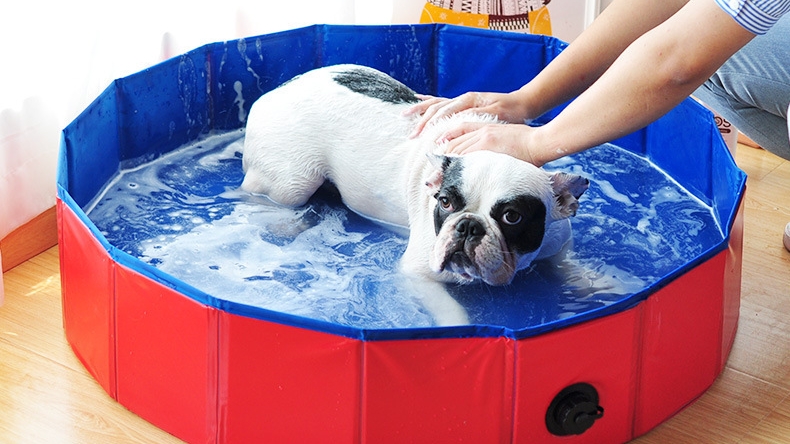
Invest in quality dog-safe filtration systems correctly sized for your pool volume to maintain clean, contaminant-free water.
Incorporate jets or waterfalls to keep water gently circulating and avoid stagnation in little-used areas.
For night swimming, install LED pool lights with safety cages to illuminate the water for visibility.
Surround the pool with non-slip concrete, stone, or synthetic wood decking that won’t heat up in the sun and can withstand wet, frequent use.
Stock your pool area with these useful accessories to maximize benefits:
Provide easy entry and exit with a sturdy foam pool ramp covered in a non-slip surface. Look for sizes suited to your dog’s height and ability.
Protect the pool when not in use and prevent unsupervised access with mesh safety covers or solar covers that shield the water.
Use a hand skimmer daily to remove debris like dog hair and bugs floating on the pool surface before they can sink and decompose.
Invest in an underwater vacuum designed to suction up sunken dirt and hair from the pool floor that regular filtration misses.
Essential items are water test kits or strips to monitor PH, chlorine, alkalinity and other chemical levels, so you can maintain proper water balance.
Have on hand a dog flotation ring, safety hook pole, and first aid kit in case your dog gets into trouble and needs rapid assistance.
The time invested into properly planning and constructing your pool will pay off in years of fun memories ahead of swimming with your dog. Follow this guide and you’ll create a backyard oasis both you and your furry friend can enjoy safely all season long!
It’s easy to make missteps when constructing your dog’s pool. Watch out for these common mistakes:
Allowing unsupervised access before the pool is fully fenced for security and installing proper safety measures.

Personalize your pool for even more fun with these creative touches:
Explore your creativity and the sky’s the limit for fun add-ons that will make your pool truly special for you and your dog!
Safety vigilance doesn’t end once the pool is built. You must implement these post-construction safety practices:
A well-designed pool is just the start. Daily and yearly safety habits are equally essential for protecting your precious pup!


This blog is your go-to guide for making the most out of the sunny weather while bonding with your furry friend. The warmth of the

Installing a pool in your backyard for your dog to swim and cool off in is a big investment. To maximize safety and enjoyment, you’ll

Does your dog love splashing in puddles and outdoor hose water? Do they try to jump in with you during bath time? Many dogs are
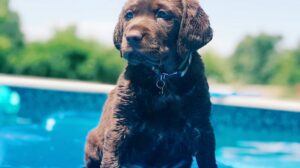
This blog is your ultimate guide to understanding how this fun and refreshing activity can significantly improve your furry friend’s overall well-being. Just like humans,

This blog is your go-to guide for making the most out of the sunny weather while bonding with your furry friend. The warmth of the

Installing a pool in your backyard for your furry friend to splash around in is an exciting project. But before you let your dog take
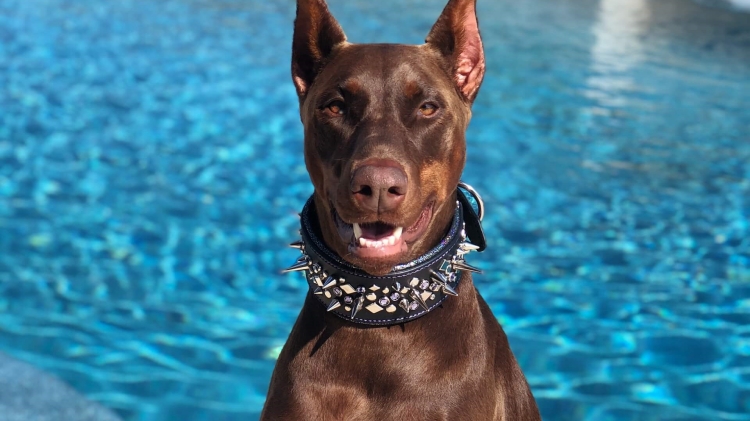
Installing a pool in your backyard for your dog to swim and cool off in is a big investment. To maximize safety and enjoyment, you’ll
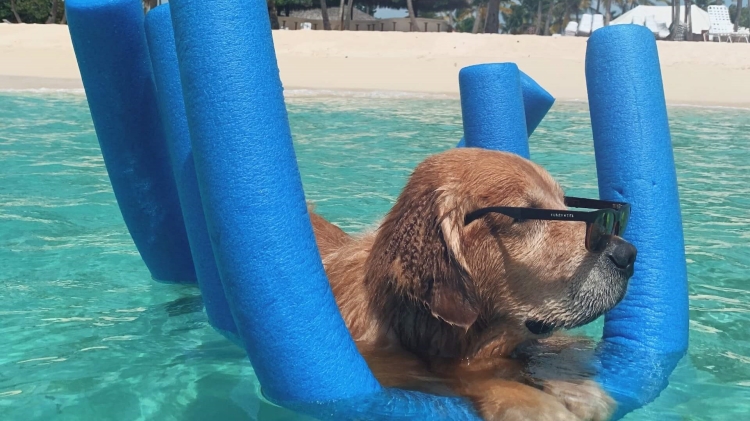
Does your dog love splashing in puddles and outdoor hose water? Do they try to jump in with you during bath time? Many dogs are
Copyright © 2024 foldabledogpools. All Rights Reserved.